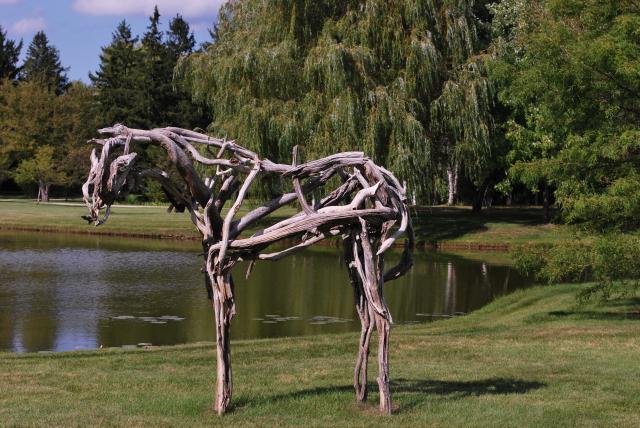Hara

Deborah Butterfield was born on May 7, 1949 in San Diego, California. She received her BFA and MFA from the University of California, Davis. Following graduate school, Butterfield taught at the University of Wisconsin-Madison. Her first solo exhibition took place at the Madison Art Center (now Madison Museum of Contemporary Art) in 1976. Butterfield moved to Montana in the late ‘70s, where she currently lives and works.
Butterfield is known for her sculptural interpretations of female horses, which she considers metaphorical self-portraits. Her choice of the horse as a subject had a political dimension, as well: rejecting the traditional bellicose portrayal of horses carrying generals off to war, Butterfield infuses her sculptures with quiet gestures, producing a gentle empathy between the viewer and the piece. The artist has always had a close relationship with horses, and still practices the art of dressage. She draws on her memories of the feel of the horses she has known, the animals enlarged by her strong affection for them. She creates a rich emotional experience by combining the horse’s perspective, the artist’s perspective and the viewer’s perspective in each work. By putting her energy into the shaping of the material, she projects life into an inanimate object; a life that can be felt by viewers. Self, spirit, energy and physicality are all aspects of Butterfield’s sculptures.
Butterfield’s earliest horses were made from plaster over steel armatures and were realistic in style. By the mid-‘70s she had replaced the plaster with natural materials: mud, clay and sticks. These early horses lay on the floor, which not only created a strong connection to the earth, but lent the figures the courage that comes from allowing oneself to be vulnerable.
When Butterfield moved to Montana, she found her new home littered with junk. This inspired her to create horses out of found metal, barbed wire, pipes and fencing, giving the pieces a material permanence that was impossible with her original organic substances. In 1985 bronze became her primary material. The bronze horses are constructed in wood, without using sketches or maquettes, and then each piece is cast individually. It is a long and arduous process involving twenty people and taking two to three months to complete. The final cast is tooled to create a surface texture similar to wood, thus giving the illusion of the original organic material while maintaining the permanence of the new.
Hara came to the Lynden Sculpture Garden on permanent loan in 2010, the first new sculpture to enter the collection in many decades. A bronze, Hara portrays a standing horse with her head slightly lowered and turned toward the left, as if she was in the process of bending down to eat, or gazing at something behind her. Hara provides the viewer with a glimpse into this horse’s persona, while simultaneously exploring the artist’s notion of the ideal horse.
